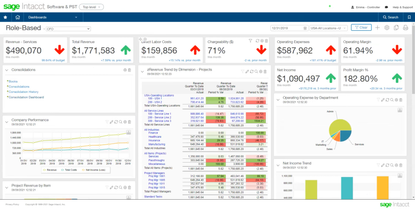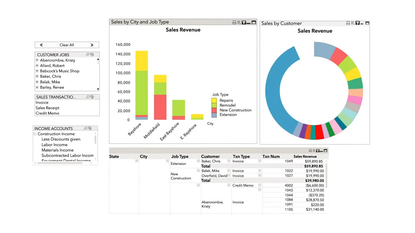Sage Intacct vs. QuickBooks Enterprise Comparison
We tested and reviewed Sage Intacct and QuickBooks Desktop Enterprise. We based this comparison on our experiences while demoing these products.


Target Market Comparison
Sage Intacct is best for SMBs (50-200 employees) and mid-market companies (200-1,000 employees). It’s highly popular in the professional services, nonprofit, retail, and healthcare industries.
QuickBooks Enterprise is best for businesses in the accounting, construction, and information technology sectors, with 10-50 employees and revenues ranging from $1 million to $10 million.
Sage Intacct Overview
Sage Intacct is a browser-based financial management software system. Its features include multi-entity financial reporting and industry-specific services. The AICPA has endorsed the platform as a preferred financial management application.
With its multidimensional reporting capabilities, project accounting with timesheets, and scalability for multi-entity support and user growth, Sage Intacct stands out. The software is also GAAP-compliant, whereas QuickBooks lacks advanced revenue recognition and complex GAAP requirements. However, budgeting and interactive reporting come at an extra cost, and it also doesn’t offer a mobile app.
QuickBooks Desktop Enterprise
QuickBooks Desktop Enterprise is an on-premises, Windows-based accounting system designed for small to medium-sized businesses. It’s a powerful platform under the QuickBooks brand, offering more capacity and advanced inventory features.
QuickBooks Enterprise excels at advanced inventory management, industry-specific reporting, and handling vast data. The system offers cloud access as well as on-premise. However, it is the most expensive version of QuickBooks, requires annual contracts, and has a user cap.
Sage Intacct vs QuickBooks Desktop Enterprise: Which is Better for Most Businesses?
For most businesses, we recommend Sage Intacct. It offers scalability, multi-entity support, and project accounting, which are valuable for growing businesses.
However, if your business relies heavily on inventory management, QuickBooks Desktop Enterprise would be a better fit with its advanced inventory features.
For more in-depth information, check out our roundup of the best ERP software.
